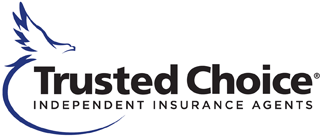As a business owner, you should be used to putting up with a certain level of risk in everything that you do. However, that doesn’t mean you can’t do anything to prevent risk from totally decimating your business model. In some cases, you can curb its effects to help you in the long run. Here’s everything you need to know about risk mitigation.
Understanding Different Levels of Risk
First, you have to understand different kinds of risks that you must plan for. On top of that, you must determine when something is too risky. For starters, you should be aware of financial risks that come with undertaking your business. If a natural disaster like a pandemic comes along and the business plan falls apart, that is a financial risk.
Another type of risk is competition risk. In certain markets, it can be almost impossible to speak to a niche. If you are wanting to build a brand to fight against the titans of industry, it’s going to be extremely risky. Every business faces this sort of competition, and pre-planning can help you a lot.
How Safety Standards Mitigate Risk
Another oft-forgotten type of risk is through your day-to-day processes. Manufacturing jobs can be particularly dangerous for your employees, so it is especially important to hold to government safety standards in everything you do.
A material safety data sheet contains information about the hazards of materials in the workplace. Make sure that you train your employees to understand the potential risks associated with their job. On top of that, having insurance can mitigate the financial risks of industry, broken equipment, and more.
Evaluating Risk Every Day
You should be looking for ways to evaluate risks every single day. Risk doesn’t have to be something that creeps up on you, but should be a normal part of your business decision-making. For example, let’s say a competitor is finding strong footing in your market—stealing your customers away.
Finding a way to take back your share of the market through innovation and planning is what risk management is all about. If you are worried you will lose money or customers, you need to find a way to keep your losses low.
This is part of what you can expect as a business owner. Learn to evaluate your risks, improve safety standards to keep yourself out of a financial blunder, and learn of the different types of risk that can affect you. It’s the practical thing to do.
Read this next: Wood Floor Water Damage: What to Do Next
LEGAL DISCLAIMER
Views expressed here do not constitute legal advice. The information contained herein is for general guidance of matter only and not for the purpose of providing legal advice. Discussion of insurance policy language is descriptive only. Every policy has different policy language. Coverage afforded under any insurance policy issued is subject to individual policy terms and conditions. Please refer to your policy for the actual language.




